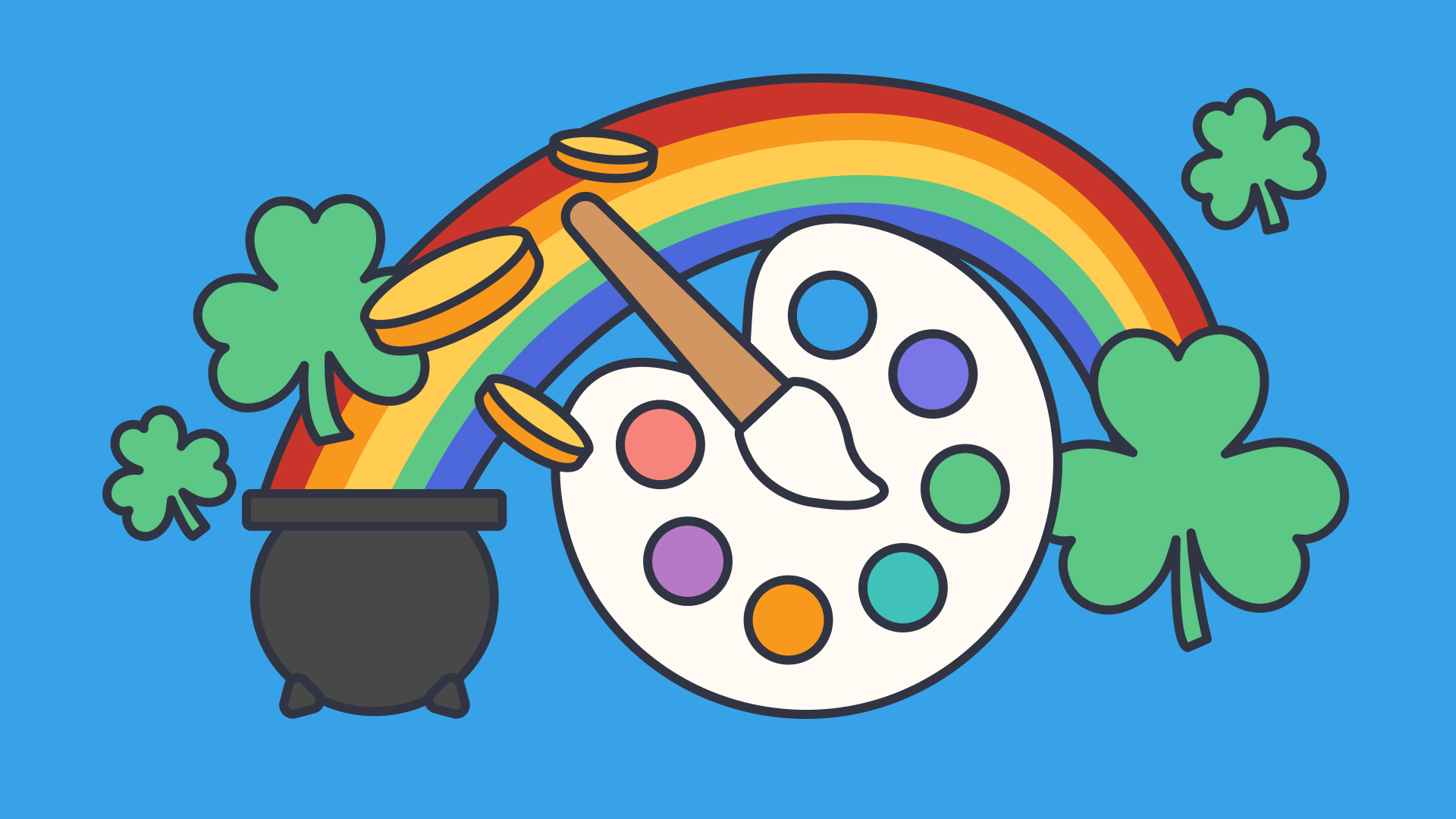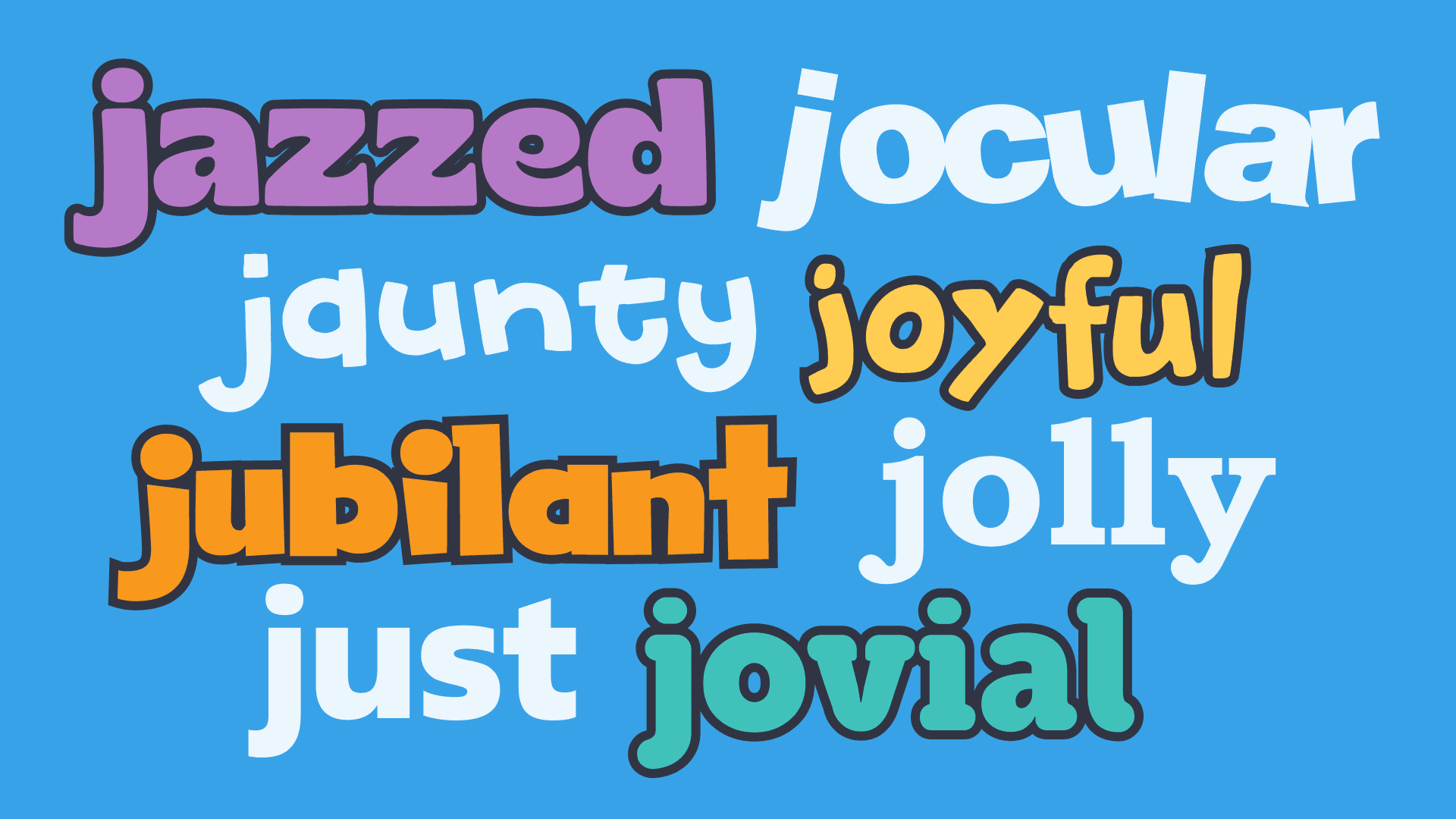Creative art projects for students celebrating Saint Patrick’s Day
In this guide
Why art projects are important for student engagement
The challenge of engaging easily distracted students is a part of every teacher’s daily life.
Art and creativity can significantly increase engagement and focus. Creativity also encourages students’ confidence levels and provides an outlet for them to express themselves. Engaged students are students who are learning!
Art projects also provide a change from the ordinary, daily schedule. Our classroom routines can become boring for both the students and the teacher. Art projects can provide a time for a change in your routine.
Art projects are not just for younger students – they can also provide a creative outlet for older students as well.
Saint Patrick’s Day art project ideas
1) Group mural/mosaic
Student age:
- Any age group
Materials:
- Paper square for each student.
- Textas, coloured pencils, or crayons.
- Glitter, stencils, stickers, gold leaf, etc. (if desired).
- Tape.
Directions:
- Give each student a paper square, then
- Create a scene that represents Saint Patrick’s Day such as:
- Leprechauns,
- Celtic knots,
- Shamrocks,
- Rainbows and
- Gold.
- Using tape, attach the pictures together to make a mosaic mural.
- Display in the classroom or hallway
This could also be a fun way to decorate your classroom door for Saint Patrick’s Day by cutting the paper squares slightly smaller and attaching them to the door.
2) Portrait of a leprechaun

Student age:
- Any age group
Materials:
- Drawing paper for each student.
- Textas, coloured pencils, crayons, or water colour paints.
- A pencil.
Directions:
- Give each student a piece of paper. It would be fun to give them a paper with a frame template already printed on it.
- Students draw a self portrait of themselves as a leprechaun.
- Display in the classroom.
Ways to make this assignment more appropriate for older students:
- Write a story about what they would be like if they were a leprechaun.
- Include written character traits on their picture.
- Instead of a self portrait, have students create a leprechaun for a character in literature.
3) Leprechaun puppets
Student age:
- Primary students
Materials:
- Paper lunch bags.
- Googly eyes.
- Textas, coloured pencils, or tempera paints.
- Craft paper.
- You can use a printed leprechaun template or let students create on their own.
Directions:
- Each student uses the lunch bag to create a leprechaun puppet.
- The head needs to be on the small part, the body on the larger part.
- Decorate with googly eyes and other available craft materials.
- In small groups, students can write and perform a short play with their puppets.
4) Illuminated manuscripts
Illuminated manuscripts are texts that were hand written and beautifully decorated. They often included gold or silver as part of the decoration. In this activity, students create their own illuminated text.
Student age:
- Middle and high school students
Materials:
- Drawing paper.
- Textas, coloured pencils.
- Glitter, gold leaf, or metallic markers/pens.
- Pen and pencil.
Directions:
- Choose or assign a topic for each student’s manuscript – These should feature elements of Irish culture and information about Saint Patrick’s Day.
- Write a paragraph about the topic.
- Illustrate the text using markers/coloured pencils and glitter or gold leaf.
If you have time you could also show your class the Book of Kells – an example of an illuminated manuscript created by Irish monks in 384 A.D.
5) Rainbows and gold

This activity can be linked to the science classroom by teaching students about rainbows and how they are formed.
Student age:
- Primary students
Materials:
- Coloured craft paper – red, orange, yellow, green, blue, indigo (purplish blue), violet (purple), white, black.
- Glue.
- Scissors.
- Textas.
- Templates (pot, clouds, gold coins).
Directions:
- Cut the craft paper into small pieces
- Glue the small pieces into a rainbow shape according to the order of a rainbow (ROY G BIV).
- Add white clouds and a pot of gold at the end.
- On the back of the paper, students write facts about rainbows or a story about finding the pot of gold.
If you cannot find paper that can pass as indigo, explain to students that indigo and violet are different colours, but we do not often see them in craft paper options.
6) Shamrock or pot of gold slime
Creating slime is something that many students may have done at home, but it can be a fun way to incorporate science into an art lesson. It is also a great sensory activity and can be great for mental health. It can also be used in science to explore polymers and chemical reactions.
Student age:
- Middle and Upper Primary students
Materials (per student):
- ½ cup clear glue.
- ½ cup liquid starch.
- ½ cup water.
- Glitter – gold, green, shamrock.
- Mixing bowl (disposable bowls work too).
- Spoon (disposable spoon).
- Green food colouring (optional).
Directions:
- Mix the glue and water.
- Add the colour and/or glitter and mix.
- Slowly add the liquid starch, stir constantly until the mixture gets thicker and stretchy.
- Knead the slime for 3-4 minutes.
- If the slime is too sticky, add a little more starch. If it is too hard, add a little more water.
- Store in an airtight container or plastic bag.
7) Personal blarney stones
The Blarney Stone is a real stone at Blarney Castle in Cork, Ireland. The legend is that if a person kisses the stone they will be granted “the gift of gab”. This means that the person will speak eloquently and be able to persuade others more easily. This is not as easy as it might seem however – in order to reach the stone one must bend backwards down a shaft in order to reach (and kiss!) the stone!
Student age:
- Primary students
Materials:
- Small/medium stone for each student.
- Paint – green, red/pink.
- Googly eyes.
- Paintbrush.
- Glue (preferably hot glue or glue dots).
Directions:
- Each student gets a rock and paints it green.
- Glue two googly eyes to the rock.
- Paint a heart shaped red/pink mouth to the stone.
- Now you have your own Blarney Stone.
To extend this activity, have students write a persuasive paragraph. If they were granted the “gift of gab” who would they try to convince and what would they try to convince them to do or believe.
How to incorporate art projects into classroom learning
When incorporating art projects into the classroom it is important to make the project relevant. In this case, students would need to know about Saint Patrick’s Day. Including information about symbols related to Ireland alongside factual information about Saint Patrick’s Day can enhance students’ background knowledge of Saint Patrick’s Day and Irish culture in general.
When creating background knowledge include information about Irish culture such as music and food. Students could also learn about the significance of the colour green and about shamrocks. Learning about leprechauns can be a fun way to learn about fairytales and myths as well.
It is also important to designate an appropriate amount of time for the art project. If students are rushed, it may limit creativity. A good way to gauge the amount of time an activity may take is to do it yourself beforehand.
When doing the activity yourself, include saying the directions and demonstrating for students how to do the activity. Add a little extra time to allow for students needing help or other interruptions. This also gives you an example project to show to students.
Tips for making art projects fun and inclusive

One way to make art inclusive is to provide choice; give students choices about what art projects they want to complete.
- Taking a class survey or vote is one way to give choice.
- Providing students with a choice board is another option.
On a choice board, students are given multiple options for assignments and then get to choose which ones they want to do to show mastery. A choice board for Saint Patrick’s Day could include art projects, research assignments, and written assignments.
As teachers we often want to direct student learning. However, there is a time for directing and a time to let students lead. Let students be creative. Give them the opportunity to express themselves without explicit direction.
That being said, for some students, too much freedom can be overwhelming. It is the job of the teacher to find a balance between free form and expectations. A way to allow for creative expression and still have high expectations is by using a rubric. A rubric helps both the teacher and the students to communicate expectations.
Rubrics should include what a student must complete in order to have a good mark and categories outlining the teacher’s expectations. A rubric can still allow for plenty of creativity, but gives students a direction for their work and allows a teacher to give feedback quickly. Below is a sample rubric for a generic art project for Saint Patrick’s Day:

Making art projects fun and engaging can enhance students’ understanding of any topic. Art allows for creativity and benefits student learning. Celebrations like Saint Patrick’s Day are a great opportunity to add an art project to your classroom.
Sources
- Blarney Castle and Gardens (2025). Blarney Stone History. Available at: https://blarneycastle.ie/blarney-stone/ (Accessed: 27 January 2025).
- Mastandrea, S., Fagioli, S., and Biasi, V. (2019) “Art and Psychological Well-Being: Linking the Brain to the Aesthetic Emotion”, Frontiers in Psychology, 10, doi: https://doi.org/10.3389/fpsyg.2019.00739
- National Gallery of Art (2025) What is an Illuminated Manuscript?. Available at: https://www.nga.gov/conservation/paper/manuscript-project.html (Accessed: 27 January 2025).
- Trinity College Dublin (2021) The Book of Kells. Available at: https://www.tcd.ie/library/research-collections/book-of-kells.php (Accessed: 27 January 2025).
- University of Florida (2023) The Importance of Art Education in the classroom. Available at: https://arteducationmasters.arts.ufl.edu/articles/importance-of-art-education/ (Accessed: 27 January 2025).

Mattie Farrer
briefcase iconAVID Site Coordinator / Content Curator
Mattie Farrer has been an educator in various grade levels and capacities during her career. She has a passion for supporting English learners and their language development. She also loves helping teachers reach all students.
Other posts
Want more content like this?
Subscribe for blog updates, monthly video releases, trending topics, and exclusive content delivered straight to your inbox.












